Agents compensation is a crucial stimulus for improving individual and company objectives.
compensation models
code: target_rateCard
The usual agent target is the save rate
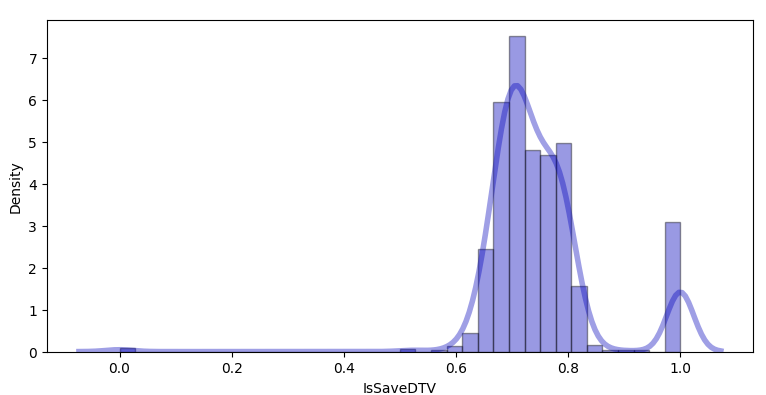 overall save rate
overall save rate
We actually know that there are many factors influencing the save rate
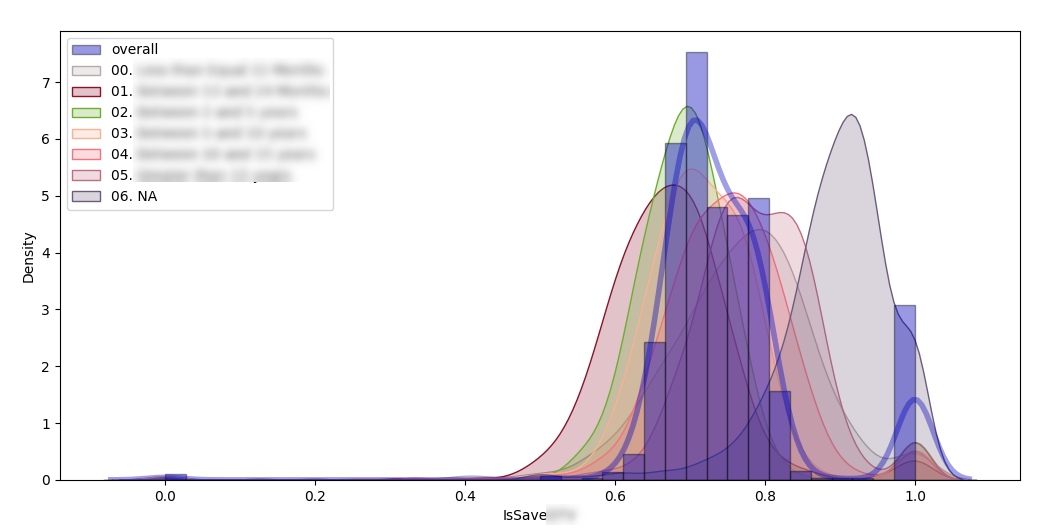 save rate depending on customer tenure
save rate depending on customer tenure
The problem can be extended to multidimension

3d representation of the save rate
code: target_etl query: sky
We first extract the data running the query on the client machine and extract the saving rate and the agent/user data.
We have few features describing the customer, the agent group and the call type. Most of the data are in buckets which we turn into continous variables
We than convert categorical features into continous variables to improve the model performance.
last_bill_amount is substitued by the upper boundprecall_tenure is substituted by the interval meanpackage hierachical treecategory one hot encodingcode: target_stat
We have few features to predict the success rate and we analyze the quality of the input data
We have missing values across all features, we need to do a typecast to allow python handling the different kind of data.
Data are narrow distributed and we don’t replace/exclude outliers neither perform a transformation on data
We start investigating the customer dimensions
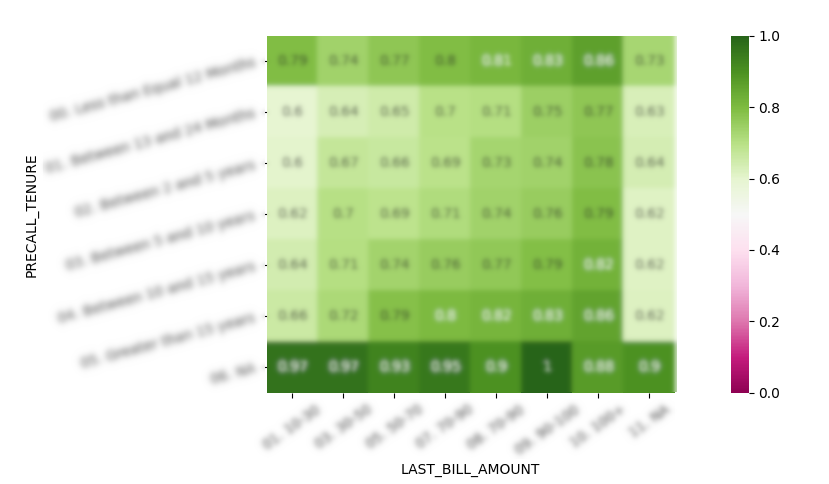 save rate depending on last bill and
tenure
save rate depending on last bill and
tenure
We see a dependence on call time but we consider it more as an effect than a cause of save rate
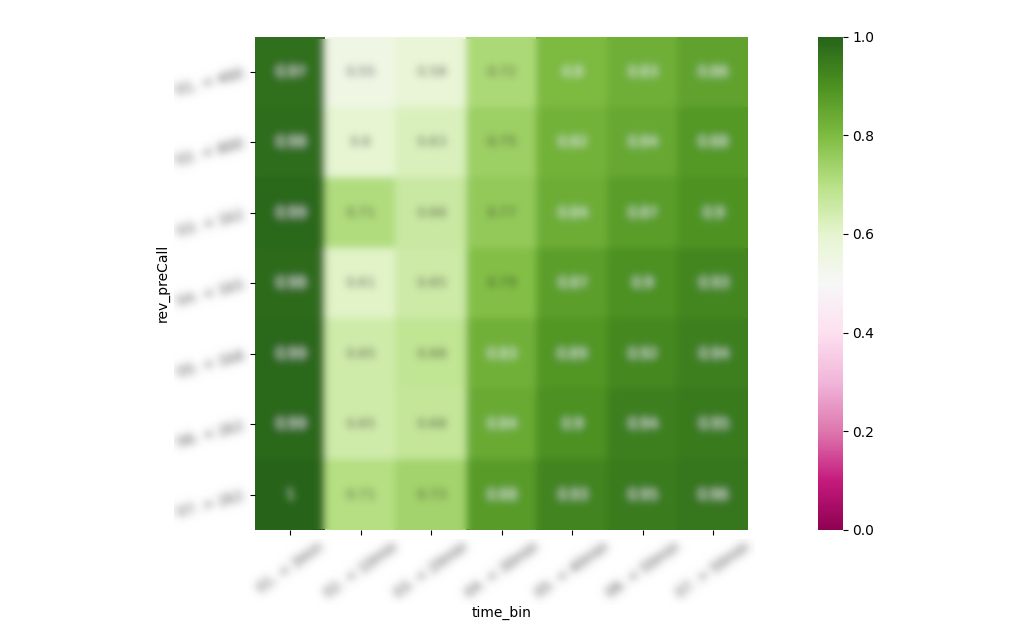 save rate depending on call time and customer revenue
save rate depending on call time and customer revenue
We can narrow down on many different levels and we will always see a feature contribution
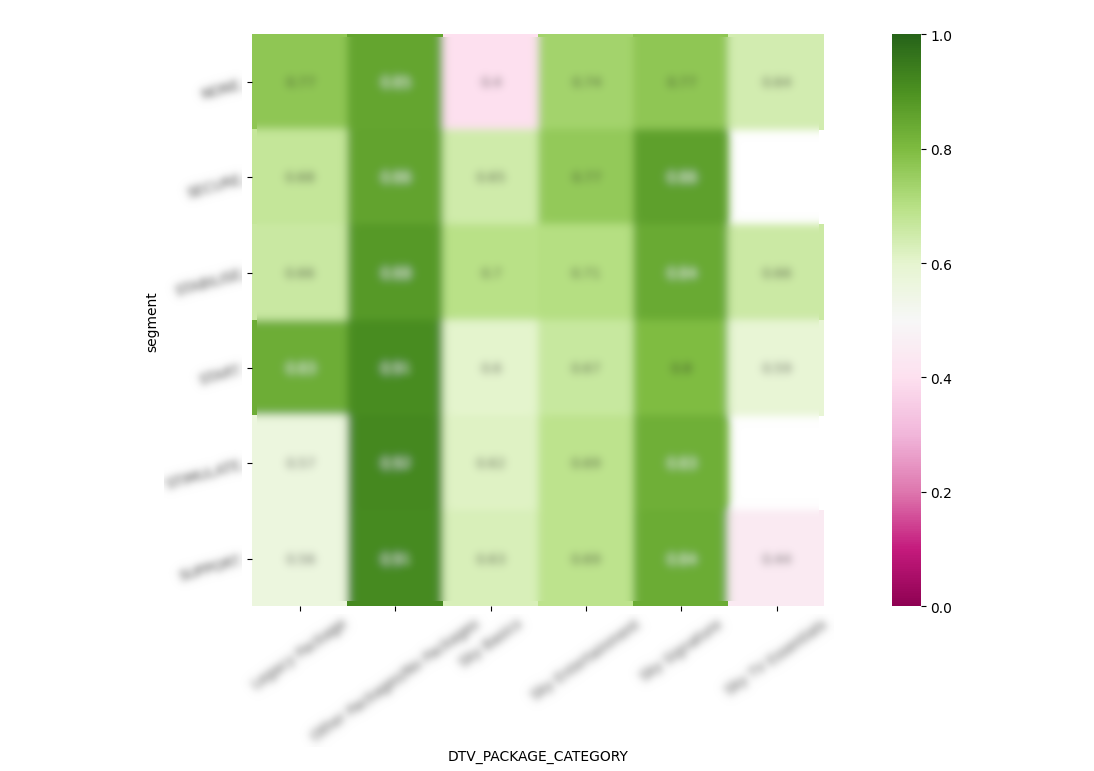 save rate depending on segments and product categories
save rate depending on segments and product categories
taking into account that low values will be discarded or clamped into larger buckets
 save rate depending on segments and product
categories
save rate depending on segments and product
categories
We finally propose the following save rate for the rate card because in connects with the revenue stream and the product development
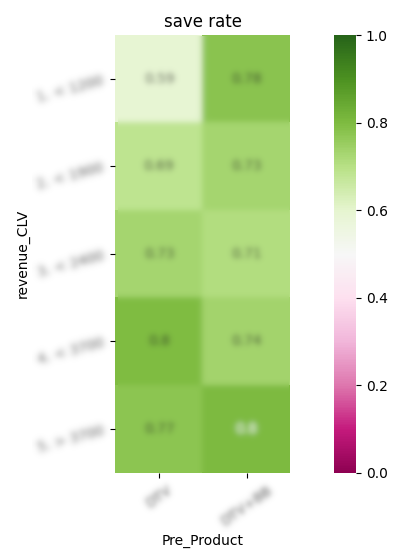 save rate depending on customer value and product holding
save rate depending on customer value and product holding
We see that other variables are implicitely modeled by the rate card
 variables implicitely defined by existing variables
variables implicitely defined by existing variables
Is there a bias in homemover and no transfer calls where a group of agents gets an un even distribution of user groups? We test it calculating the share of call groups for each agent for each week and calculate the ranking distribution
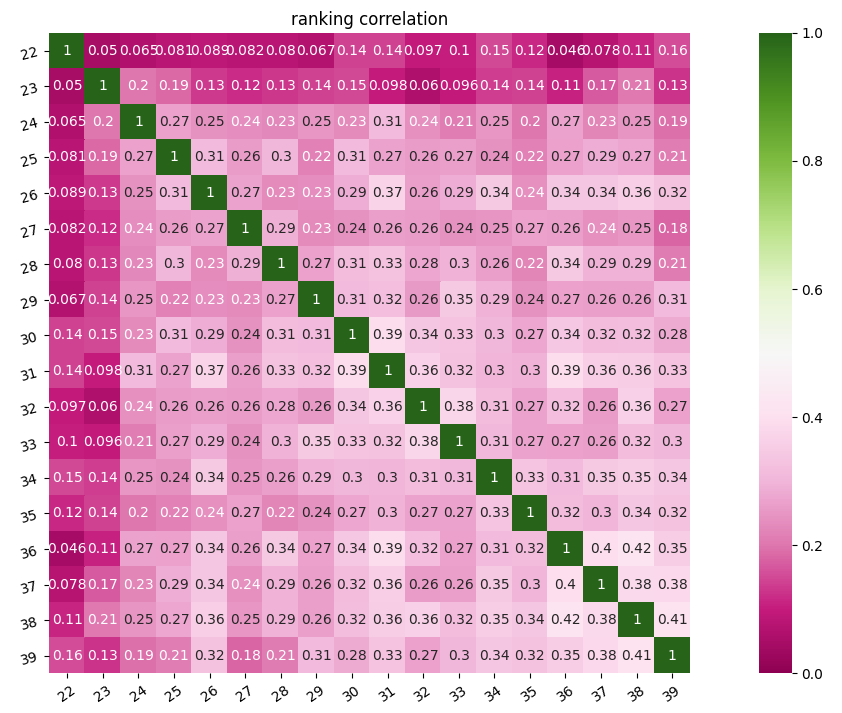 ranking from week to week
ranking from week to week
The ranking correlation drops after few weeks
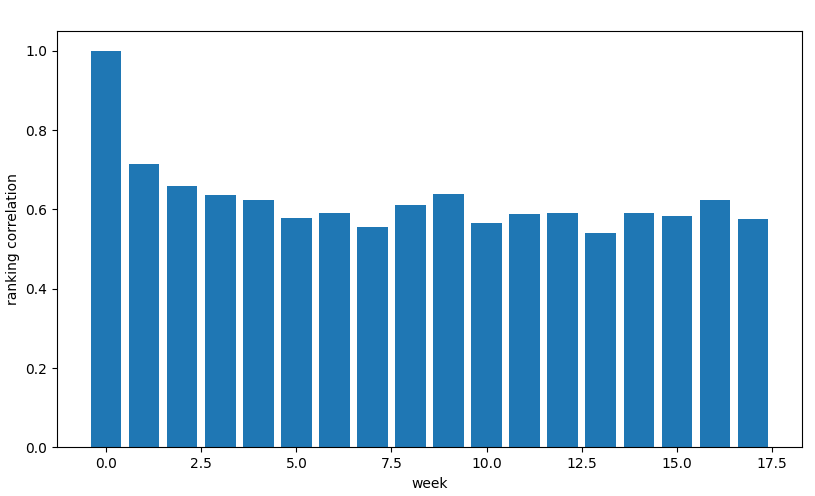 decay of autocorrelation over
weeks
decay of autocorrelation over
weeks
We test the chi square for the agent series compared with the average
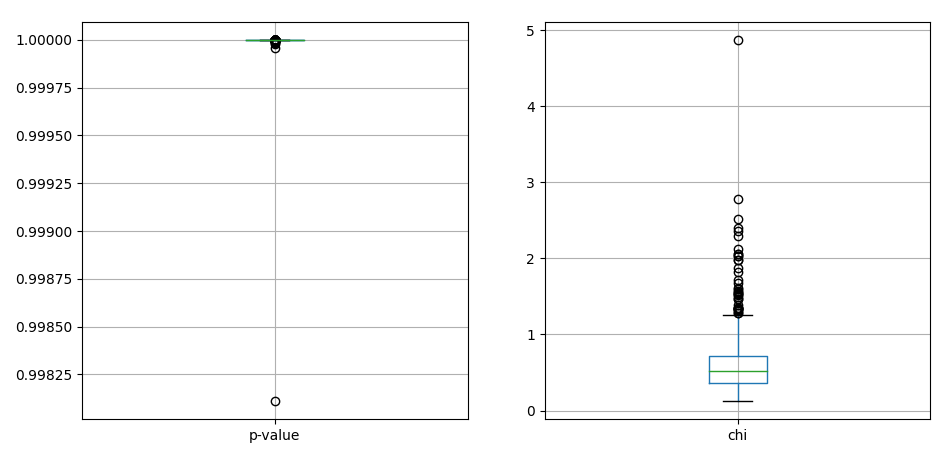 chi values for agent call distribution
chi values for agent call distribution
We see that the chi values are pretty small and the p-values really high
We analyze the distribution of features (normalized) and compare the variances
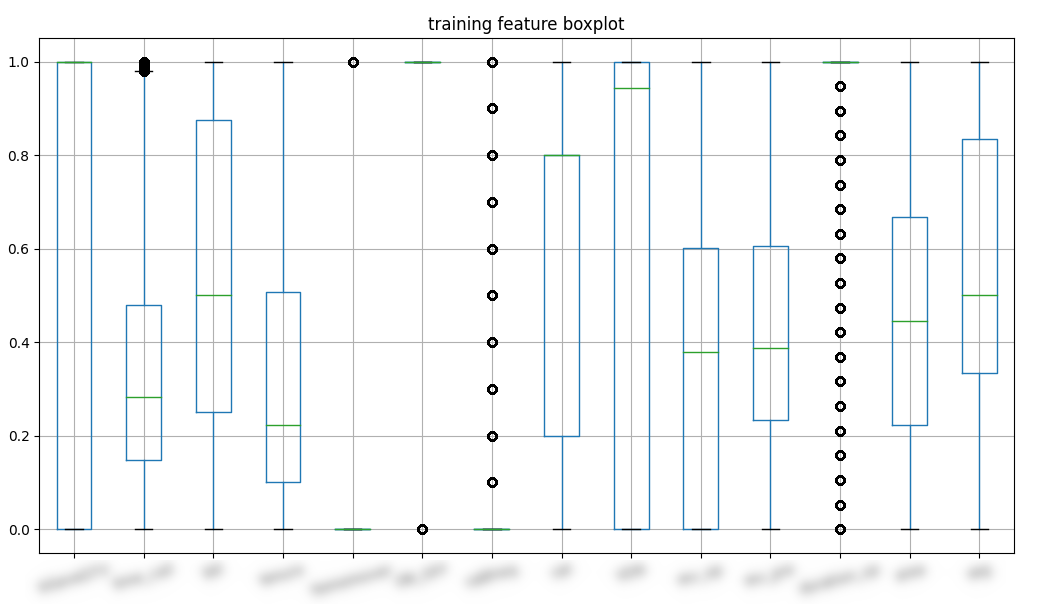 boxplot of normalized features
boxplot of normalized features
Most of the values are discretized
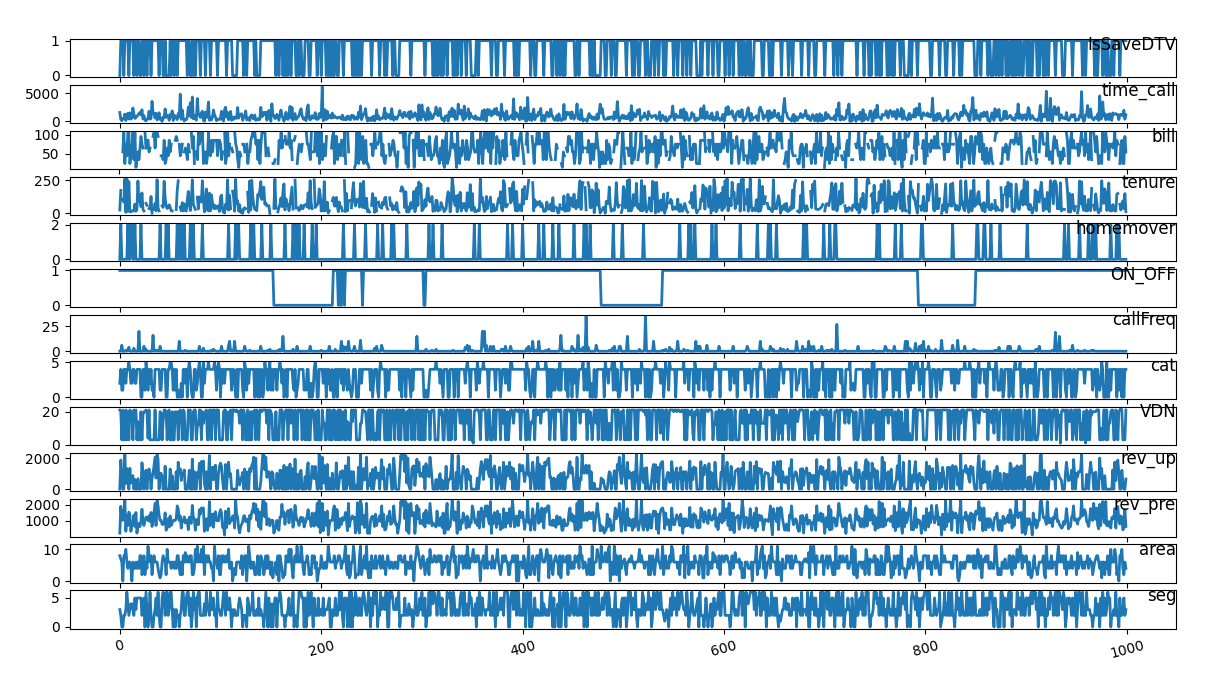 time series of features
time series of features
We see that this feature set don’t have any internal correlation
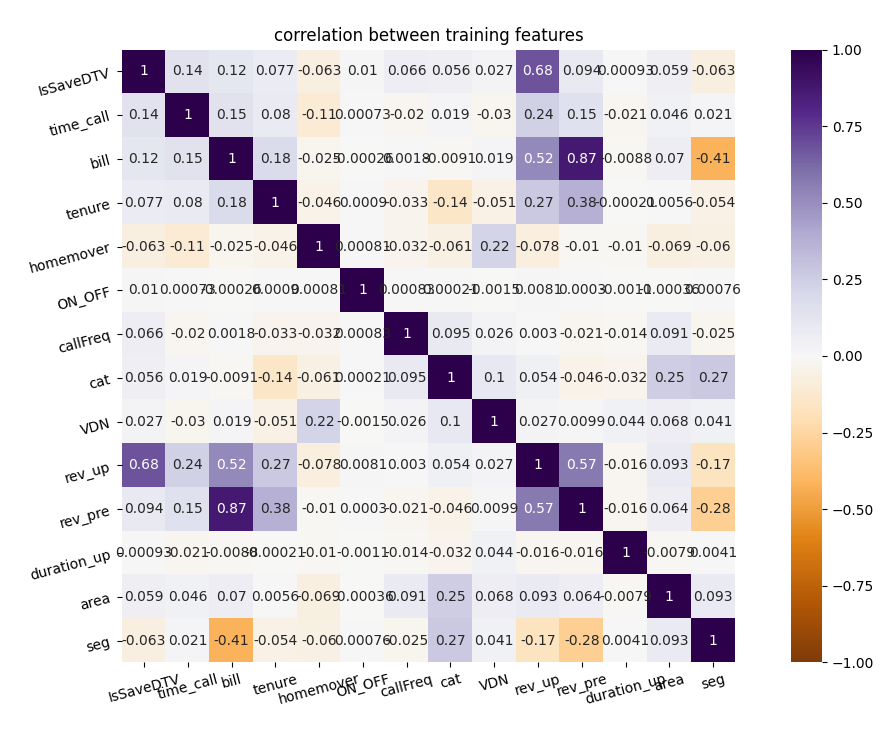 correlation of features
correlation of features
We display a pairplot stressing the different distribution depending
on the save rate. We see a clear difference in distribution across all
features and especially different regression depending on
last_bill_amount and precall_tenure
 pairplot of features depending on success
pairplot of features depending on success
A close up explains which features are important for the prediction
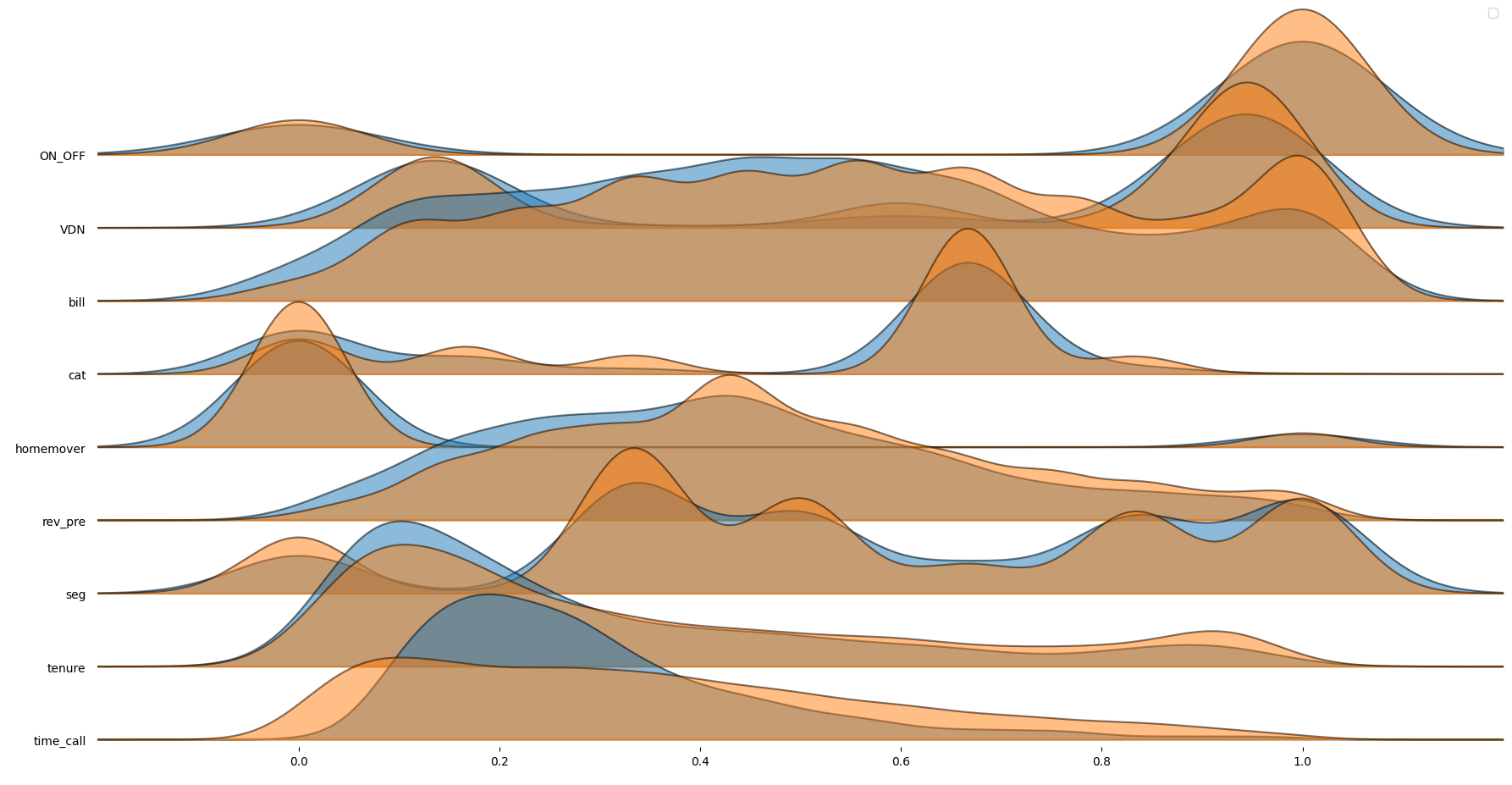 joyplot for the most relevant features
joyplot for the most relevant features
We can say a slight difference in distribution in the different success subsets
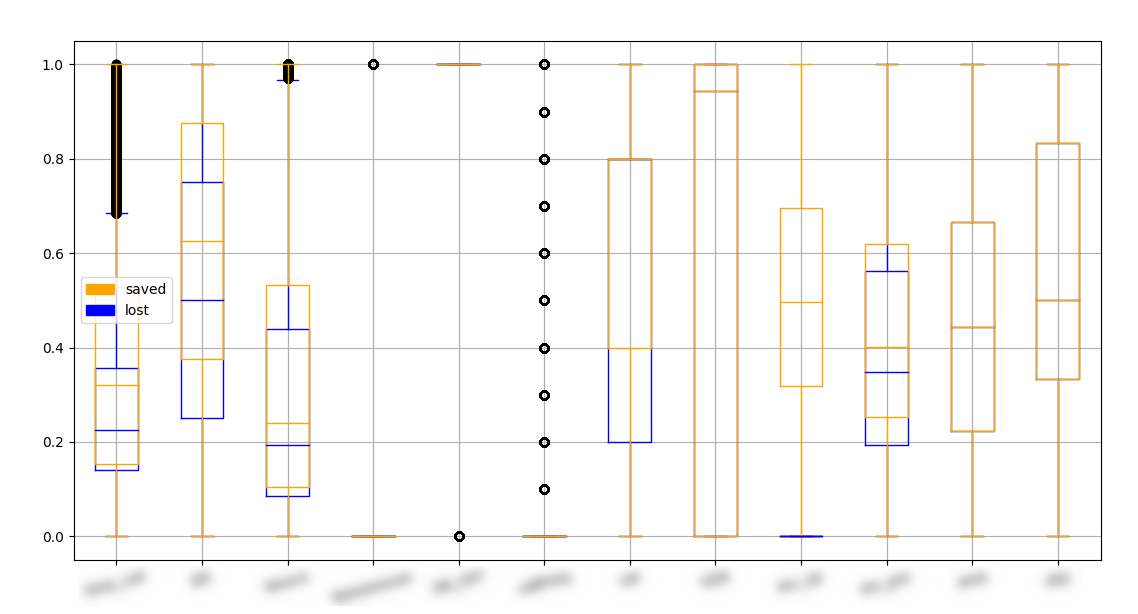 feature on success
feature on success
We see that the afiniti engine is slightly increasing the call time
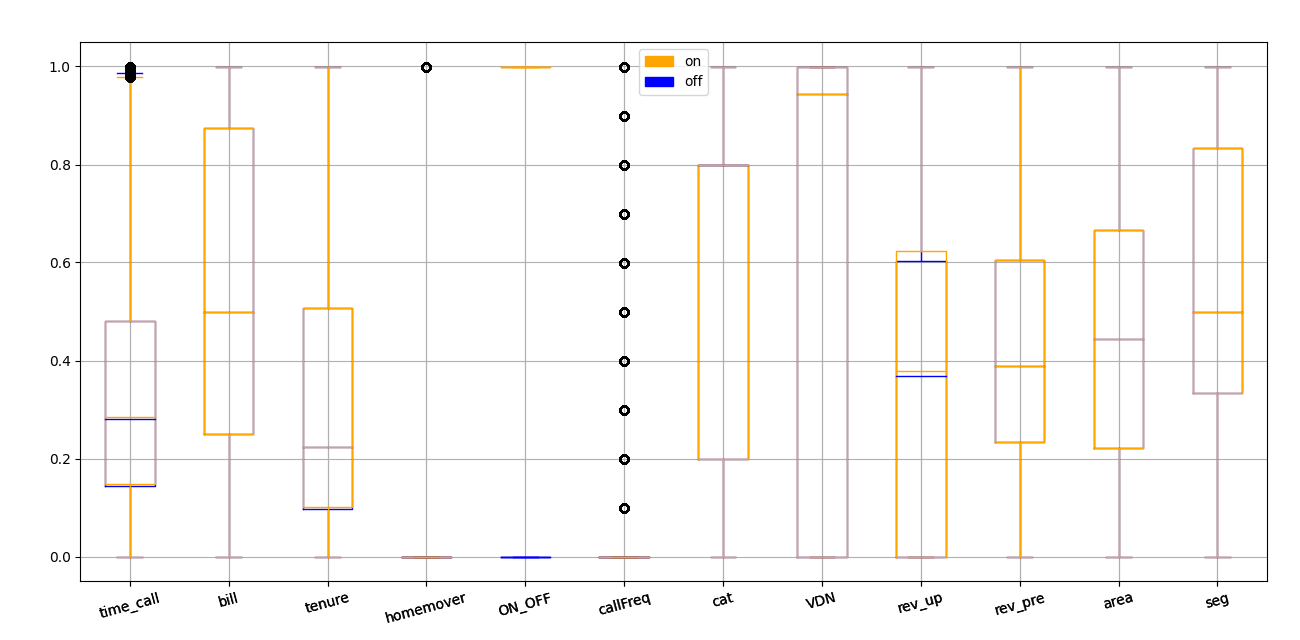 feature
on afiniti on
feature
on afiniti on
We iterate over different models to calculate the prediction strength of this feature set. We see that performances are not high
 prediction of save rate
prediction of save rate
We see a larger number of false positive which tell us the difficulty to understand for a customer to cancel the contract
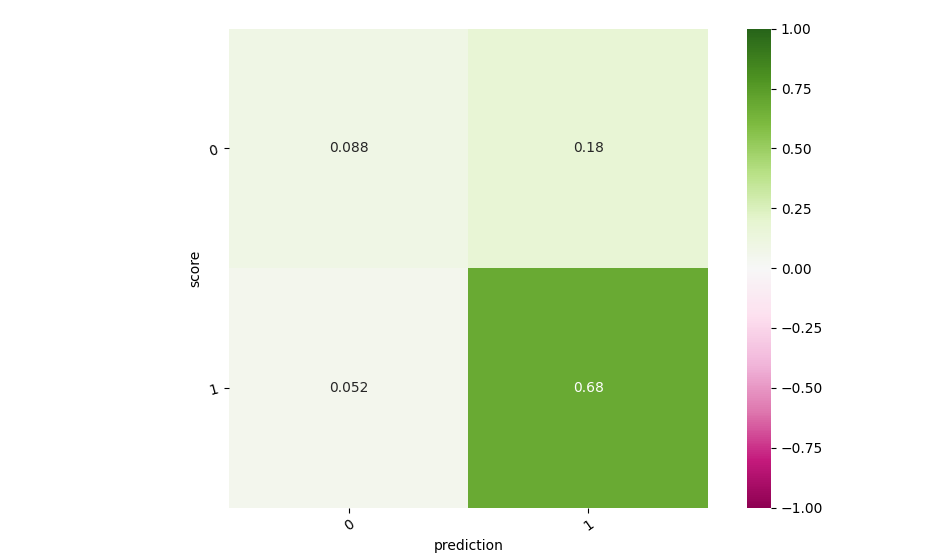 confusion matrix on save rate prediction
confusion matrix on save rate prediction
We know that agent skill is a really important variable to model but we have few information on agent data to model such a variable and we hence treat it as a latent variable.
To assess the relative ability we imagine the agents being on a tournament, the customer is the referee and the game pitch is the area and the product.
agent ability simulating a match between agents
Based on the historical series we run a stan simulation based on a prior ability where we compare the agent performances on the different game pitches
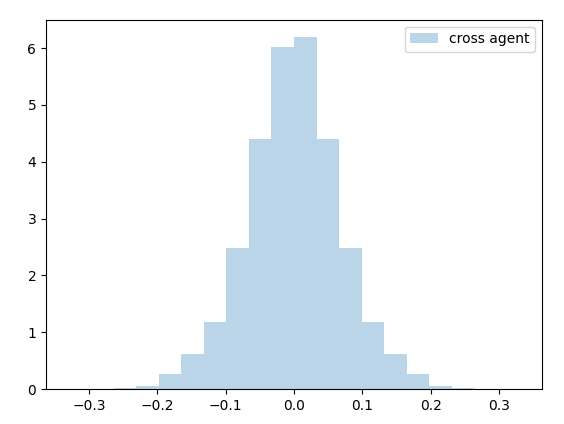 prior of the agent ability on area and product
prior of the agent ability on area and product
Once we get the prior distribution we run a simulation across all the agents over multiple games
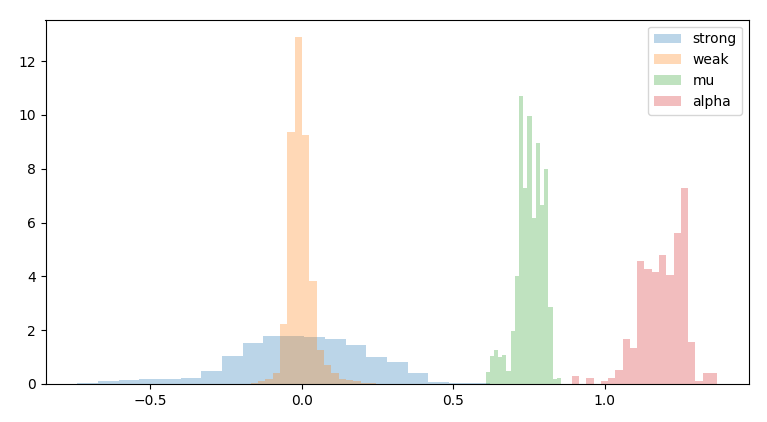 posterior of the agent ability on area
and product
posterior of the agent ability on area
and product
and we create a ranking
 posterior of the agent ability on area
and product
posterior of the agent ability on area
and product
We than simulate a series of matches and we finally calculate the posterior agent ability
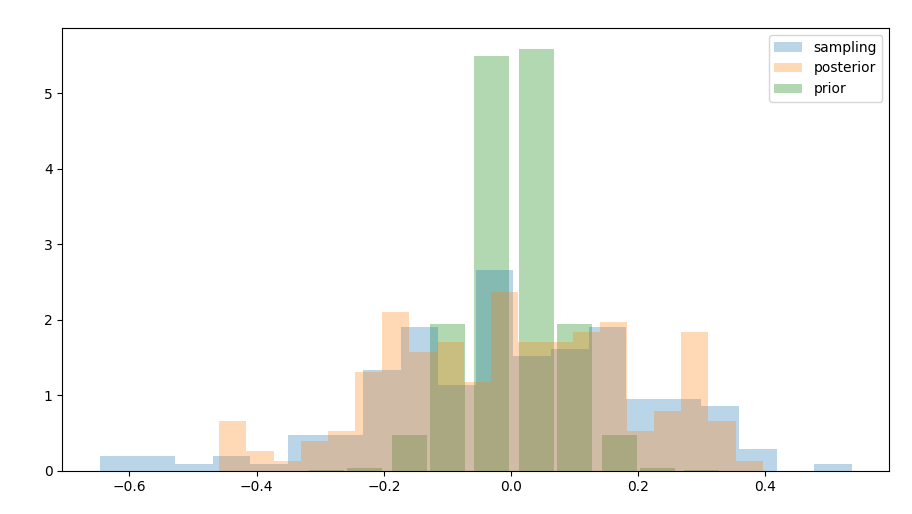 posterior of the agent ability on area
and product
posterior of the agent ability on area
and product
Following game theory for a given set of rules the compensation implies a strategy and therefore the tuning of the compensation is crucial for performances.
game theory sketch
We need to balance between the individual and the company compensation:
We consider all users equal and the agent compensation is based on the saving rate. We consider a probability of saving rate of 73% +/- 22%:
Each pair user/agent has a different success probability, what if the compensation would be based on the success probability increase
Users have a different value depending on their records, the value is weighted by the previous bill and the tenure:
We have a list of users, each defined by the tenure, the bill amount, the product selection and the queue of the call
definition of users based on tenure, bill value, product selection
and queue
We have a list of agents defined by the certifications, the tenure, the knowledge of the product and the queue they work in
specification of agents
We can estimate the probability of success of the call based on few information, we actually see that the retention of the customer is easier for high value customers
the success of the call depends on few
features
Once a user calls the success probability depends on the type of agent joining the call
user/agent success probability
We predict the value of the customer in case of a successful call based on historical data
estimated customer value after retention
We propose parallel simulations where the agent is incentivised on different compensations which will imply different strategies and different achivements of company and personal goals
agent strategey based on
compensation
code: sim_compensation.py
We create a simulation where we:
simulation details
The compensations are:
Plus we simulate the effect of the afiniti engine on pairing users and agents:
We suppose each agent has persuasive skills which can influence the outcome of the call. We give to the agent the same persuasive strength independent on the compensation but proportional to the compensation
Display during the call with prediction box and compensation in case
of success
We create a set of users and agents following empirical distributions:
 empirical and simulated distribution of last bill
empirical and simulated distribution of last bill
For last bill, tenure, and save rate
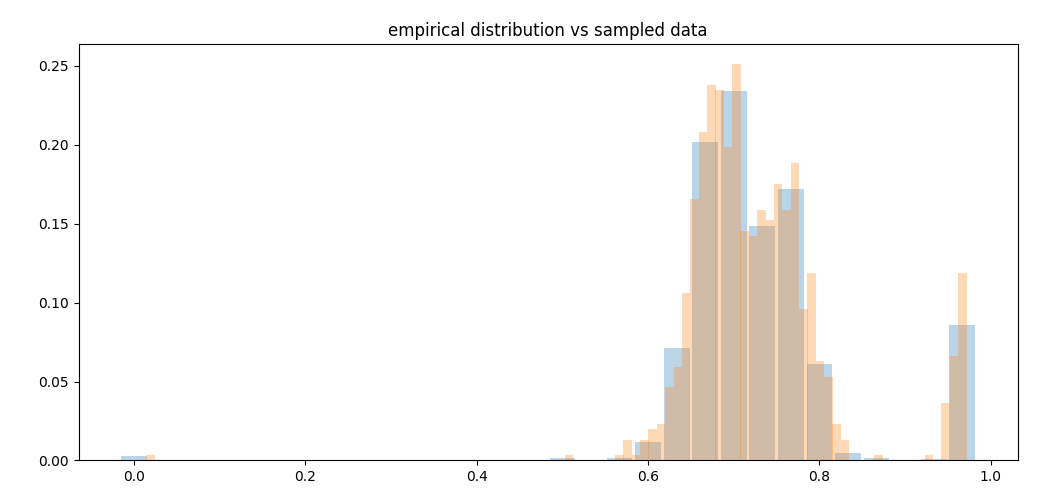 empirical and simulated distribution of save rate
empirical and simulated distribution of save rate
We see comparing to different strategies how the company revenue increases
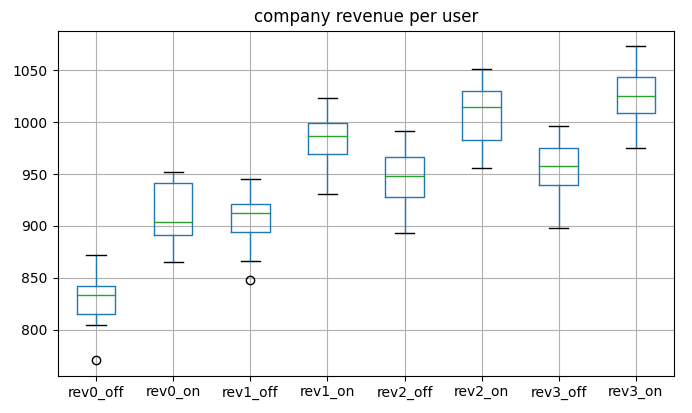 revenue company in different scenarios
revenue company in different scenarios
We have a close up on the revenue uplift for the average across all simulations
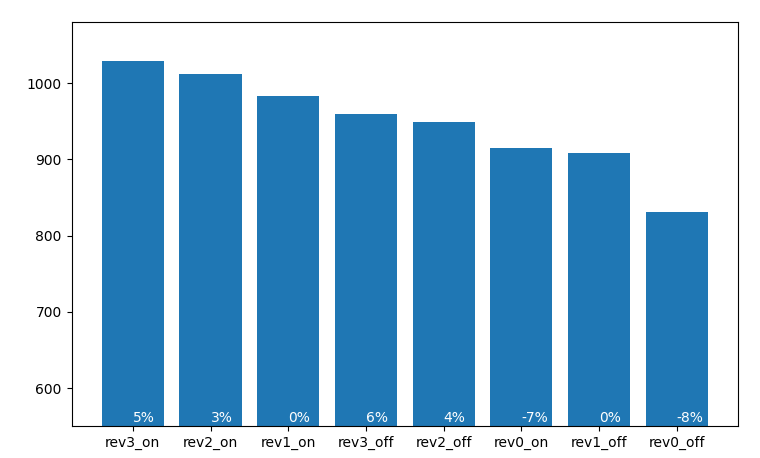 uplift due to the different strategies
uplift due to the different strategies
We want to make sure that the agent compensation is fairly distributed across all agents, and we see a clear increase in agent compensation depending on the strategy
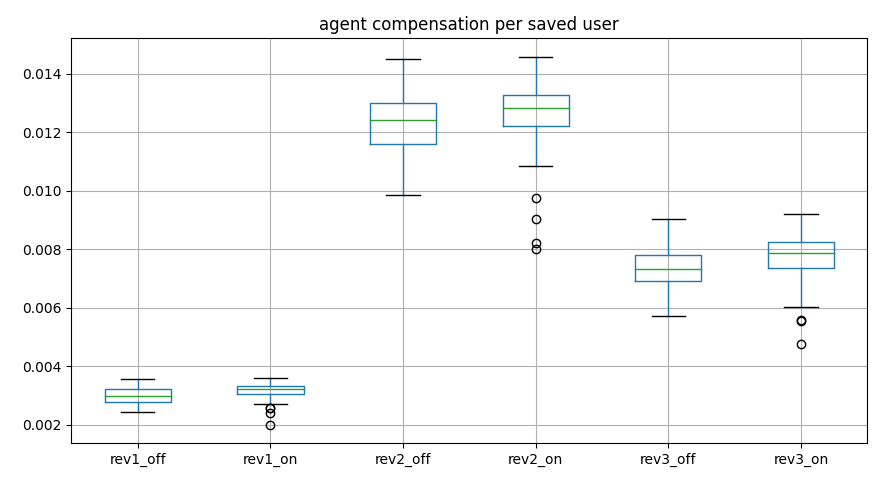 compensation distribution across all agents
compensation distribution across all agents
We see that the company uplift is fairly distributed
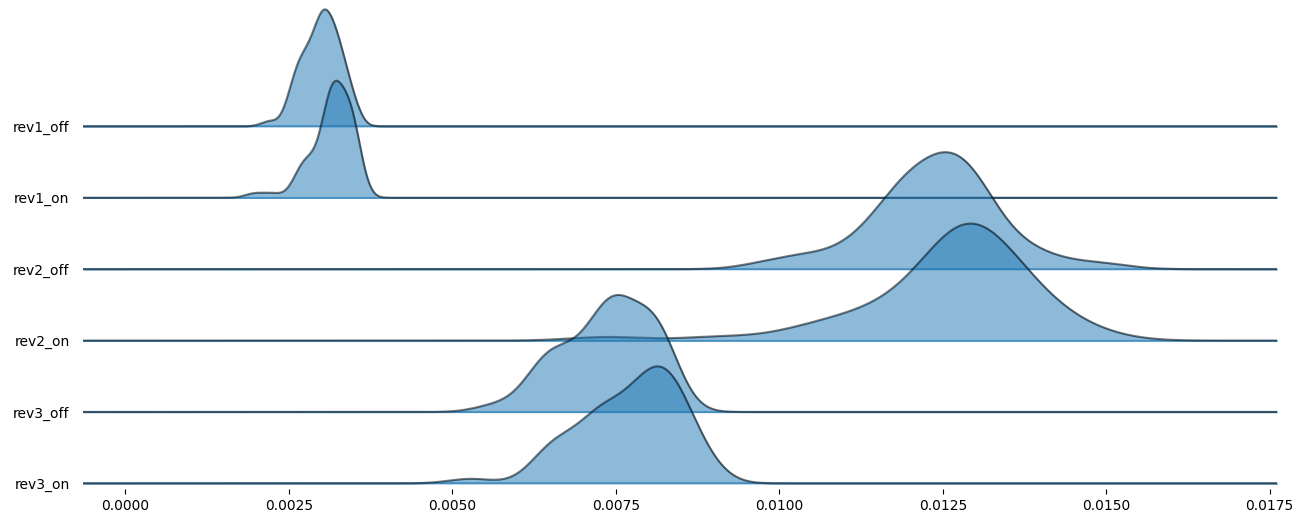 distributions are not broader
distributions are not broader
Finally we can show that the proposed compensation scheme still incentivize the individual ability
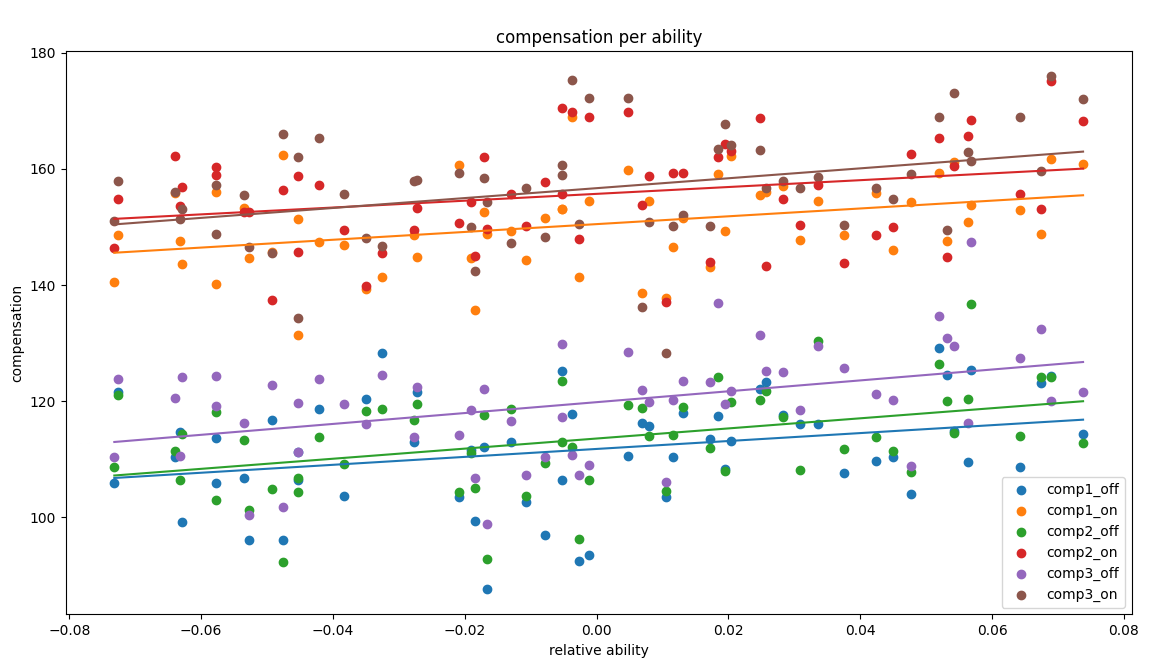 all the proposed methods increase the compensation together with the
agent ability
all the proposed methods increase the compensation together with the
agent ability
We show that the rank correlation on save rate is good across the different compensation, the pairing eingine is increasing the shuffling between agents. The compensation scheme increases shuffling between agents ranking
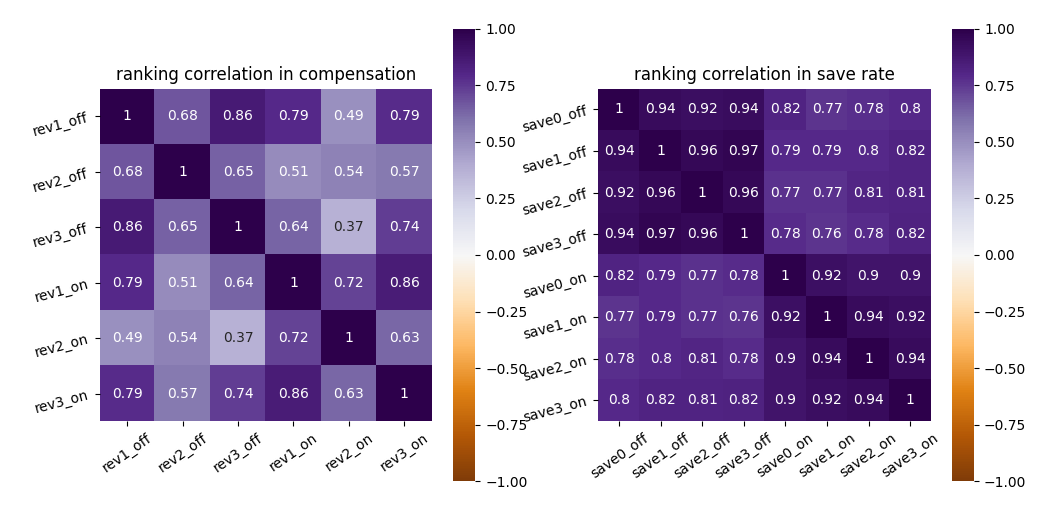 rank
correlation across different compensation models
rank
correlation across different compensation models
We have few parameters to tune:
What is a boost and how can we quantify the influenceability vs motivation of an agent? We can set a benchmark with completely unmotivated agents and use it as a baseline for modelling the commission scheme. We see that the agent compensation delta compared to save rate steadly increases
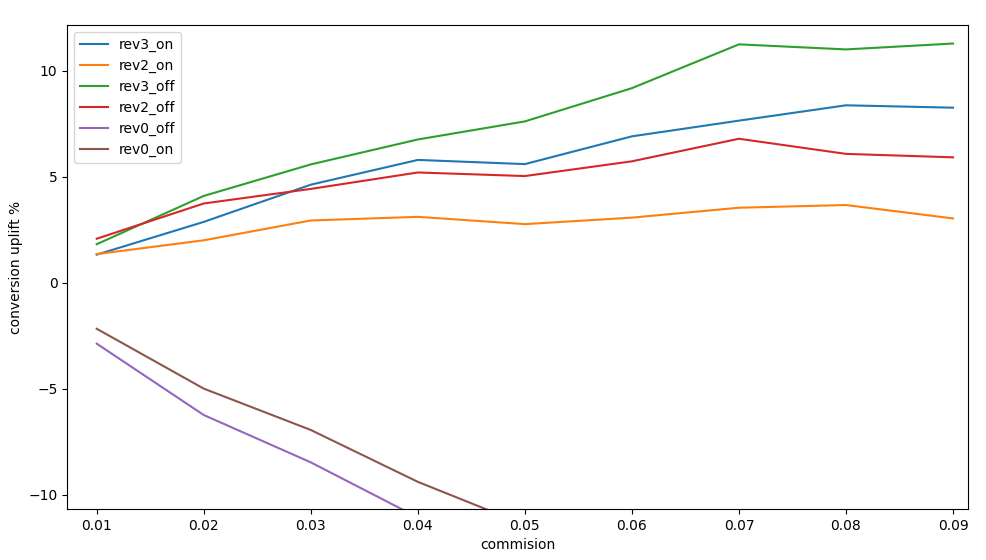 uplift in commission compared from the
current scheme
uplift in commission compared from the
current scheme
Using different methods we can define the targets modifying the save rate by the weighted save rate and maintain a similar reward process
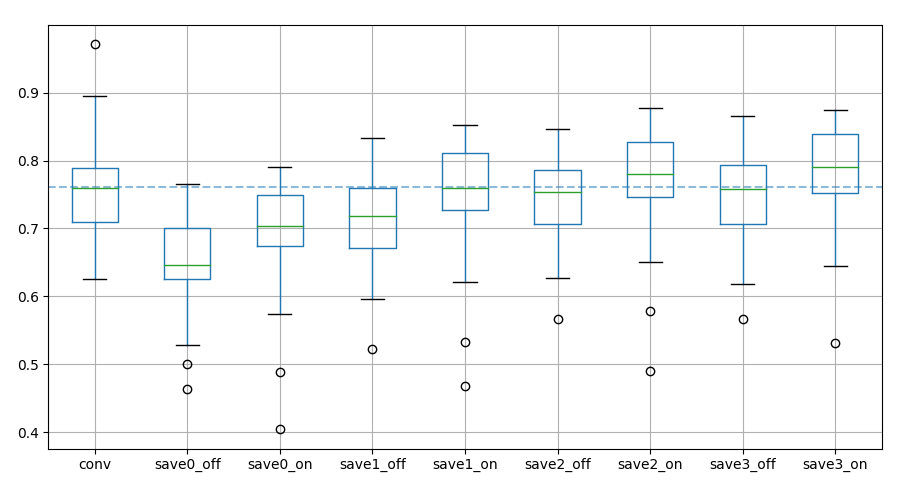 save rate across differente compensation schemes
save rate across differente compensation schemes
We can predict the outcome of a call with a certain accuracy and use our predictive capabilities to shape different simulations.
The current compensation model is not motivating a win-win strategy for the company and the agent the current targets induce the agent to be as good as the others and don’t consider the risk of loosing an high valuable customer
We have simulated different scenarios and fine tune a compensation model to increase the customer retention, the company revenues and the agent personal reward.
We have shown that compensating an agent proportionally to the risk of the call or the customer value increases both company and personal goals.
We have shown as well that the increased revenue is fairly distributed and even less perfomant agent profit from a change in call distribution and strategy.
code : github project : github article : match article : stan article : stan
